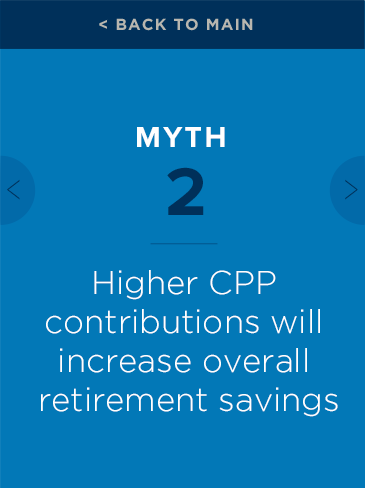Myth 2 – Higher CPP contributions will increase overall retirement savings


A second key myth is that increasing the CPP will result in a net increase in overall retirement savings. Unfortunately, this is not true. Any increase in the CPP will be offset by lower savings in private accounts.
Canadians choose how much they save and spend based on their income and preferred lifestyle. If their income and preferences do not change, and the government mandates higher contributions to the CPP, Canadians will simply reduce their private savings. In the end, overall savings won’t change but there will be a reshuffling, with more money going to the CPP and less to private savings like RRSPs, TFSAs, and other investments. This finding is backed up by research. One particular study focused on the mandatory increases in the CPP contribution rate between 1996 and 2004, when the rate rose from 5.6% to 9.9% of eligible earnings. That increase was followed by a drop in the private savings of Canadian households—for every $1 increase in CPP contributions, the average Canadian household reduced its private savings by roughly $1. Canadians didn’t, in fact, save more overall—they just saved differently, with less being saved privately.
Among the implications associated with reduced private savings are loss of choice and flexibility. For example, money saved in an RRSP allows Canadians to pull a portion of their funds out for a down payment on a home, or to upgrade their education, transfer money to a beneficiary in the event of death, or withdraw money in the case of an emergency. These benefits are not available through the CPP.




